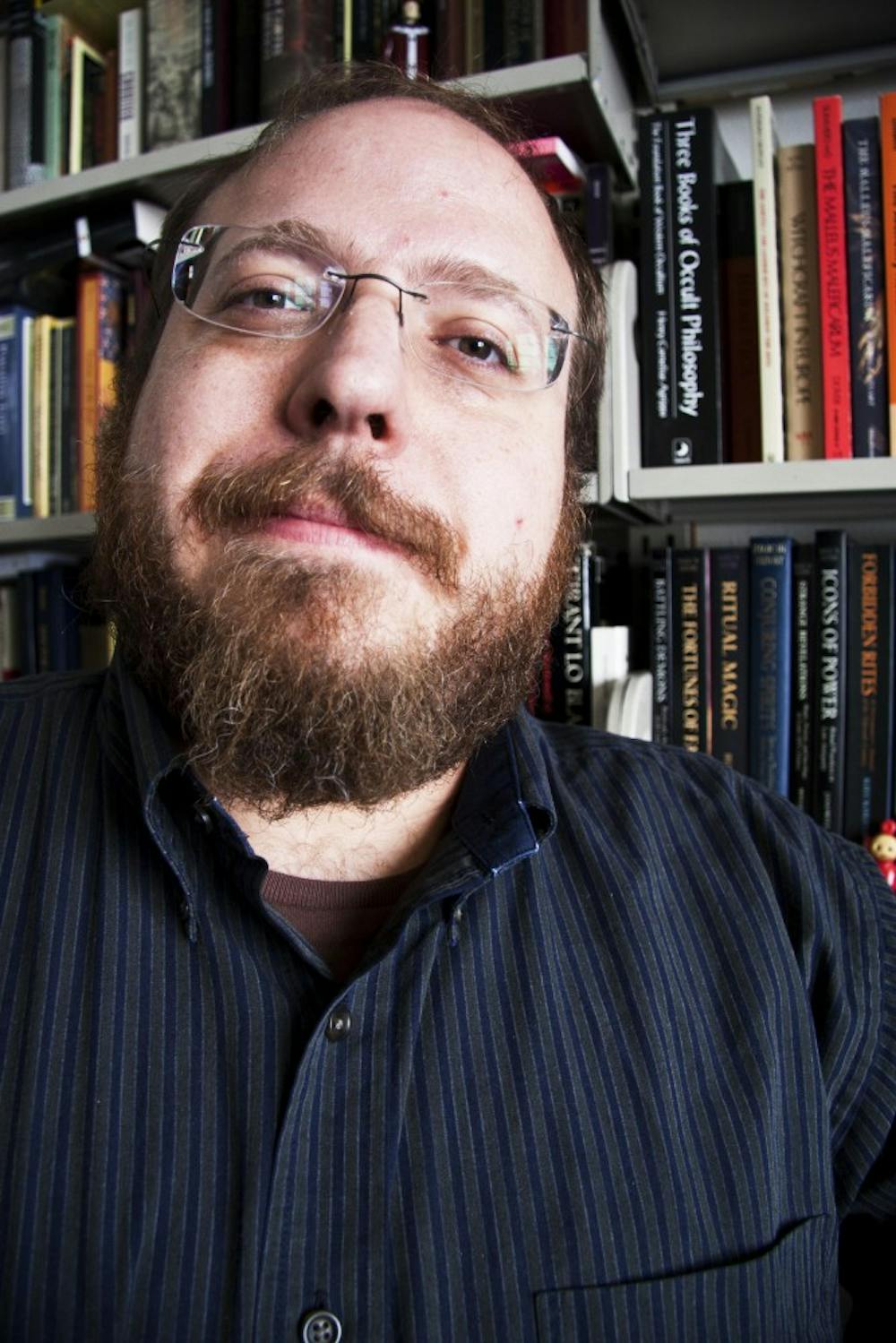Associate Professor of History Mike Ryan will join UNM’s Institute of Medieval Studies after leaving a tenured position at Purdue University in Indiana.
His new UNM office is filled to the brim with books on everything from medieval sorcery to the practices of ancient Christianity.
The largest piece of art in the room is called “The Triumph of Death,” and it depicts the myriad ways a person could die in the early modern age. Ryan said he celebrated the publishing of his book, A Kingdom of Stargazers: Astrology and Authority in the Late Medieval Crown of Aragon, by getting a sleeve tattoo of a 14th-century French translation of an early medieval text called “On the Properties of Things.”
Daily Lobo: What brought you to UNM?
Mike Ryan: I love it here; this is a dream job for me. I first came to New Mexico in 2007 for a conference that my colleague Tim Graham was putting together for the Medieval Academy of America. I fell in love with the city, I fell in love with the University, I really dug the people that I met, and I was just absolutely blown away by it. I actually told my partner, who was from the west and wanted to retire in the west, ‘They’ve got medievalists here. Most likely they’ll never have another job for another medievalist, but if they did, I’d apply for it.’
In the meantime, I just kept trucking along at Purdue. Then last year, I saw the position had opened up, and I contacted Professor Graham, who was my Latin professor at Western Michigan, and I said, ‘Professor Graham, what’s going on? I thought you had medievalists.’ He said, ‘We lost our medievalists because they took jobs in California and we’re in desperate need.’ All the stars aligned properly, I ended up getting offered the position and I took it.
DL: Why New Mexico?
MR: I loved it. I thought the culture was fascinating. I thought it was absolutely amazing in terms of its natural beauty, I love the climate, I love the food, I thought the people were fantastic.
I was trucking along, we were perfectly fine to stay at Purdue for the next 30 years or whatever and build my career there, but when this opportunity presented itself, I had to go for it and just see.
DL: Red or Green?
MR: I think I prefer red, believe it or not. I love green chile, but I kind of like the red a little bit more in terms of the subtlety of the flavors. But I do love green chile and love the scent of roasted chile.
DL: What attracted you to medieval studies when you were starting out in your career? What were you interested in when you went to school?
Get content from The Daily Lobo delivered to your inbox
MR: When I was a kid, I used to really be into fantasy. Reading it and also playing Dungeons and Dragons and all of that. I had always had a predilection in middle school and high school for the humanities.
I was fine in science and chemistry, physics, math courses, but I really found that I loved the literature courses, the social studies courses, the languages. That’s the stuff that really drove me. When I went to the University of Florida where I did my undergrad, I realized in my first semester that I wanted to be a history major.
DL: What do you say to people who wonder why medieval studies should be studied at all?
MR: It’s a relevant discipline. When you look at a place like New Mexico, there is a certain quality to it, where you get a sense of late-medieval and early modern ideas that are still prevalent. In terms of just the place names, the culture of the society, you can see this tangible representation of the past all around us in New Mexico. That’s a huge reason why it’s relevant.
For many of the students that are here, the end of the middle ages is roughly 1500. You’re a college student sitting in a lecture in 2011; some of these students are going to think, ‘How does that influence my life, my day-to-day existence?’ I’m always trying to show the relevance of medieval studies, why it’s important, why we still have the echoes of the medieval past today, and how we learn from this past to prevent any future mistakes.
I always use the example of the university itself. When we think about a university structure, we don’t have the same sort of campus and regalia and all of this that we think of with a modern university in the middle ages. Yet, the university in its current form emerges in the cities of medieval Europe, where you have a relationship between an instructor and a group of students, where this information is being disseminated and digested and elaborated upon. This is part of the outgrowth of the medieval world that is today still in existence.






